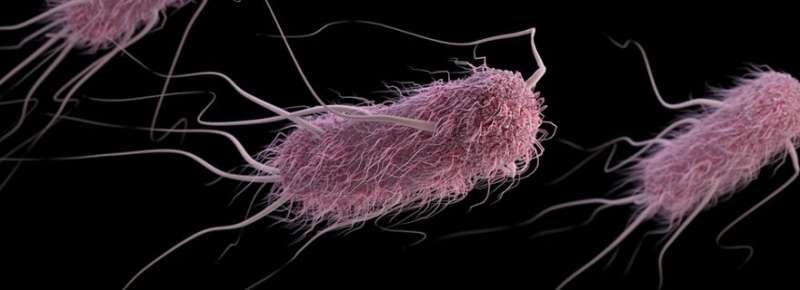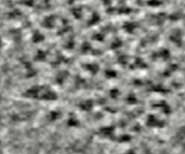Evolution of bacterial movement revealed

An international team with researchers from Leiden revealed how a bacterium repurposed an internal system to control its movements. Movement control is very important in host invasion, which can lead to disease. Publication on 27 April in Nature Communications.
Bacteria from 'nose' to 'tail'
Cells are full of complex systems of which the origins are a mystery. In bacteria nineteen different systems based on 'smell' are known, so-called chemosensory systems (see frame). In the study published, the researchers found an ancestral chemosensory system of the model species of the bacterium Escherichia coli in several other bacteria like the pathogenic bacterium Pseudomonas aeruginosa and in Vibrio cholerae, the bacterium that causes cholera. Furthermore, the study revealed the origin of the chemosensory system of E. coli, including the evolutionary steps that led to the modern E. coli. These findings may help in the development of anti-microbial remedies using the chemosensory system as a target. From Leiden co-corresponding author Ariane Briegel, Professor of Ultrastructural biology at the Institute of Biology Leiden, and Ph.D. student and second author Wen Yang were involved in the study.
Bacteria move based on chemosensory 'smell' signals in their surroundings. The 'smell' signals reach the bacterium through its 'nose," activating a system within the bacterium to control the spinning direction of the flagella. Flagella are rotating 'tails' that many bacteria use to navigate their environment. They guide the bacterium towards something attractive and away from something repelling. These 'smell' signals are very important for pathogenic bacteria to be able to invade their host.
System under stress

When the researchers looked at the bacteria under stress conditions by starvation, they discovered that under these conditions, a different form of the chemosensory system appeared in the Vibrio cholerae and Pseudomonas aeruginosa bacteria. Tracing the evolutionary history of the system, it turned out to be the ancestral form of the system that is present in E. coli. The researchers discovered that this ancient form took over another chemosensory system in a series of evolutionary steps and gained control of the flagellar motor. The combination of the two systems now makes up the chemosensory system in modern E. coli bacteria. This finding shows an example of how complex systems were being repurposed during evolution.
Ice-cold microscopy
The researchers were able to study the bacteria with the use of cryo-electron microscopy and bioinformatics. Inside a cryo-electron microscope, the temperature is almost 200°C below zero. By freezing microbes very quickly they are pristinely preserved in a glass-like ice. With cryotomography, the researchers take hundreds of photos of bacteria in different stages and are able to reconstruct the microbes in three dimensions at macromolecular resolution. Briegel and others collected the data at Caltech, Pasadena, California. Leiden holds similar cryo-electron microscopy facilities at the Netherlands Center for Electron Nanoscopy (NeCEN), where Briegel holds a position as co-director.
More information: Davi R. Ortega et al. Repurposing a chemosensory macromolecular machine, Nature Communications (2020). doi.org/10.1038/s41467-020-15736-5
Journal information: Nature Communications
Provided by Leiden University


















